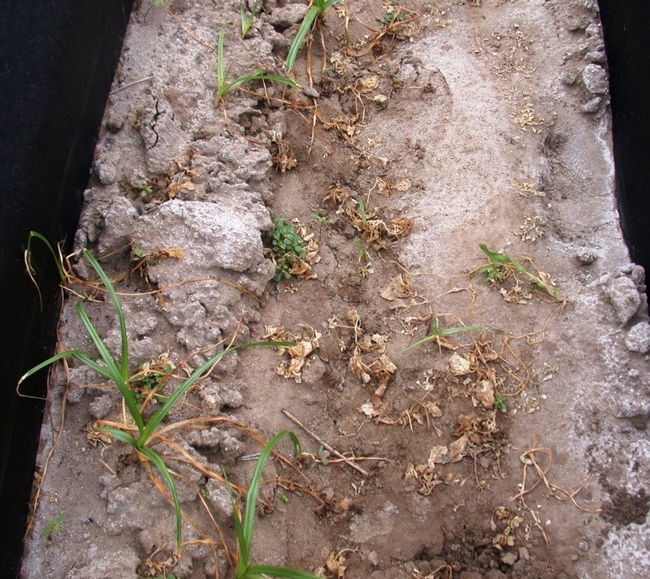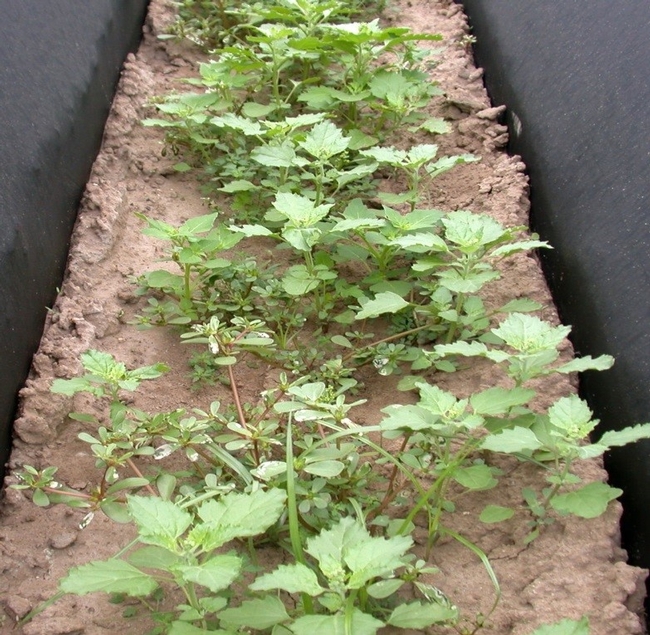Using organic herbicides in production fields and non-crop areas.
The forecasts call for rainy winter and that means a lot of weeds. During dry times perennial weeds tend to grow better than annual weeds, since perennial structures such as underground rhizomes or tubers can support them and give competitive advantage. Seed of annual weeds in dry soil may have been losing viability, senescing or eaten during this time, but many have remained dormant and look forward to the wet winter us much as the rest of us.
Controlling weeds ‘organically' is always an extra challenge whether you are in a certified field or in an area where synthetic herbicides are not desired. Hand-weeding, already expensive, is even a greater burden with limited labor availability, and frankly not much fun either. Of course sanitation and prevention, mechanical and cultural management are essential in organic systems. That requires time and commitment and can quickly become your not-so-favorite pastime.
Organic herbicides have traditionally been contact materials with no systemic activity. This means that they only affect tissue that they contact and do not translocate through the plant like most synthetic herbicides. Thus, good coverage is critical for these contact materials. Many years ago the first herbicides were sulfuric acid and diesel fuel, current organic materials are often acids or oils too, although a lot more benign.
Recent trials by the University of California weed scientists showed that several organic herbicides provided decent control of easy to control pigweed and nightshade when they were small. When weeds were 12 days old, a mixture of 45% clove and 45% cinnamon oil, 20%-acetic acid and d-limonene gave 61-89% control; however only d-limonene controlled 19-day old weeds and none was effective on one-month old ones. As weeds get bigger they also develop a protective cuticle that minimizes efficacy of these herbicides.
This year we conducted trials with a recently OMRI approved herbicide for row crops, trees and vines that is a mix of caprylic and capric acids. It disrupts cell membranes of plans and causes the contents to leak and plants to desiccate. It worked well at 6 to 9% by volume mixture with water and gave 90% control of little mallow and >95% of annual sowthistle compared to untreated checks. We have also tested it in organic strawberry furrows before planting the crop to prevent potential injury from drift. Furrow cultivation does not get close to the plastic mulch that covers the beds to prevent tears, so the weeds in that zone are good target for the herbicide. This fatty acid herbicide provided excellent control of common lambsquarter, reduced the growth of common purslane but didn't do much for yellow nutsedge - one of our notoriously difficult to control perennial weeds (Figure). The bigger weeds need higher rates (9% is the maximum labeled rate) and better coverage. When you have multiple layers of weed leaf canopy and diverse architecture some plants or their parts may be protected by others that intercept the deposition of the herbicide. When on target, this contact material acts fast – you can see results within 2-3 days, however, it does nothing to weed propagules in soil and has no residual activity against wind-dispersed weed seed that fly in after application. This means the control does not last and you will need additional applications or other control measures. Repeated application is not a problem in a non-crop area and is a great way to deplete your weed seedbank, but crop protection from drift, such as shielded sprayers, is necessary to avoid off target plant injury.
Figure. Weed control in strawberry furrows prior to planting with 9% by volume of fatty acid herbicide (top) and weeds in untreated check (bottom)
Attached Images:

